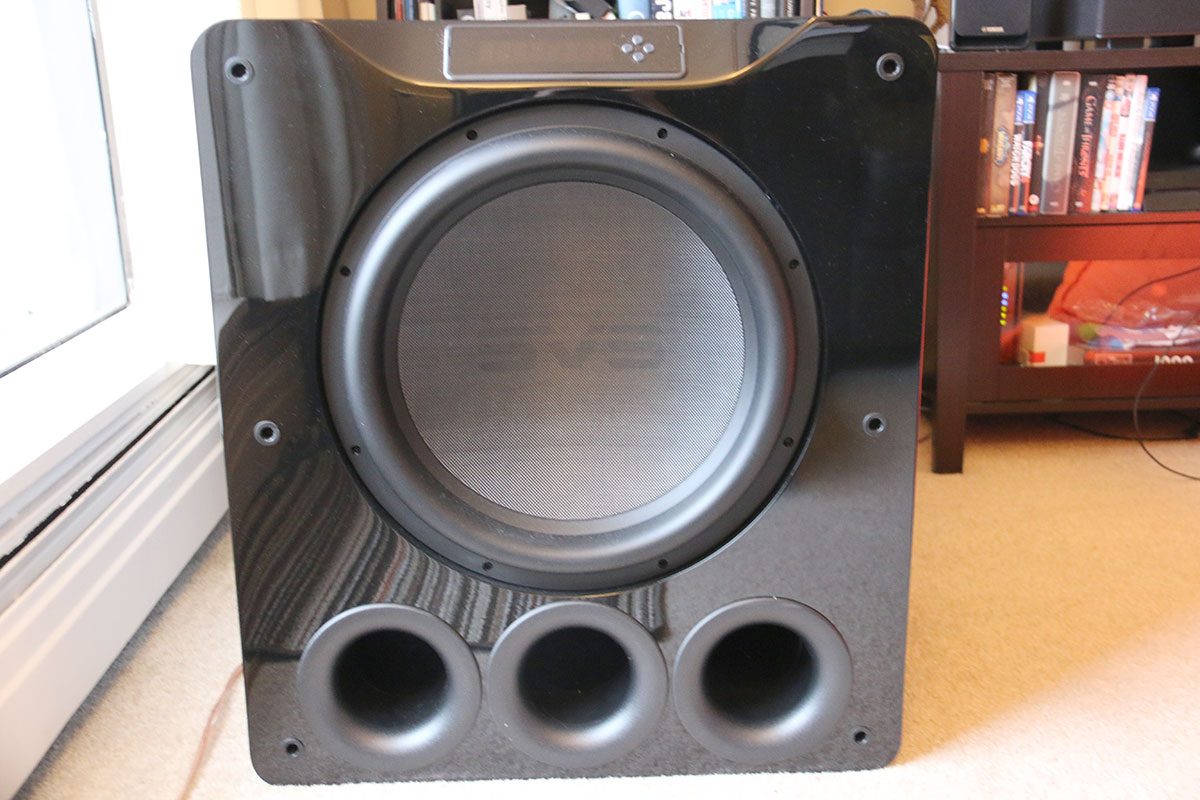
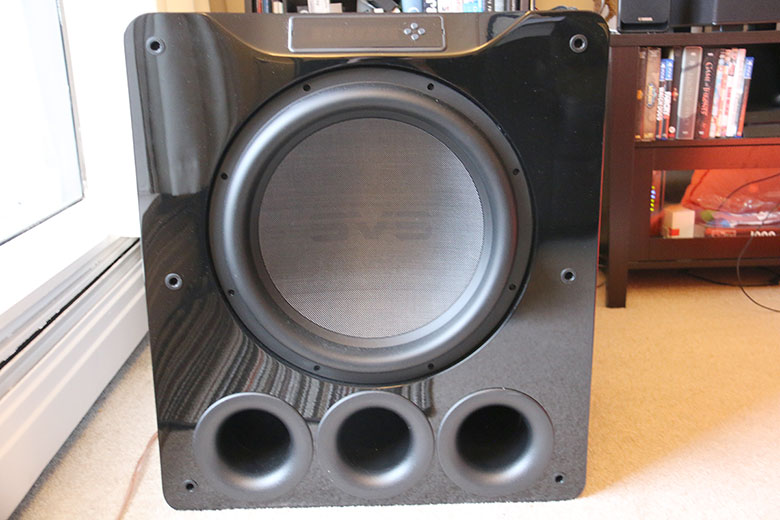
The Master Switch


The Master Switch
Buying a subwoofer is like navigating a minefield. You want to get the best bass possible, but you probably also want to avoid installing a sub the size of a rhinoceros in your living room. Here, we’ve broken down the key steps in choosing a subwoofer, from sound quality and volume to how much they cost, and whether or not to buy a wireless sub. For a look at our top picks, see our article on the best subwoofers.
The first big question that everybody asks is: is a subwoofer actually going to improve my bass? The easy answer is that, no matter how much or how little you spend, your bass will improve with a dedicated sub. It’s going to become meatier, richer, and deeper. Subwoofers are specifically designed to give the low-end a major boost, and they work exceptionally well for both music and movies.
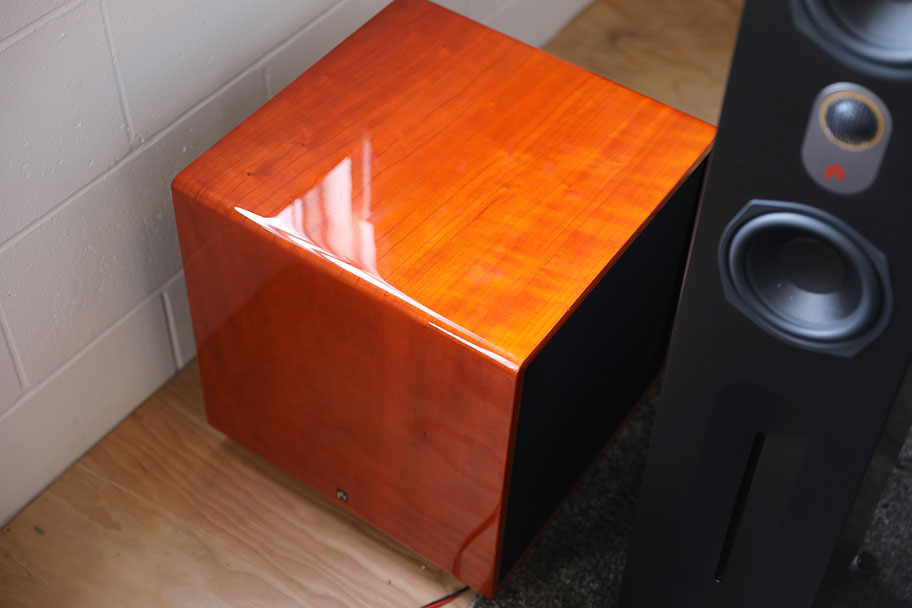
However, there’s one key thing that nobody will tell you about choosing a subwoofer. Sound quality is important, but it’s not the most important thing. Otherwise, we’d be advising you to spend thousands and thousands of dollars on the biggest, most obnoxious subwoofer you could find. Instead, you need to consider elements like size, power output, and frequency range. It’s not just about having the cleanest bass; it’s about having the best bass for you. In other words, don’t stress too much about sound quality at this stage.
Size matters in the world of subwoofers. The range and quality of your bass will be largely determined by the size of your driver. The driver is essentially the subwoofer’s speaker – the circular cone that makes sound. Moving bass frequencies through the air requires a lot of energy. The bigger the driver, the more energy it will be able to put out, and that means a bigger cabinet as well. But how big is big?
Usually, this is the part where we make comments about the relative lengths of pieces of string, but in the case of subwoofers, there’s a very good guideline here. Let’s assume you’re equipping a home theater or hi-fi system in an average-size room – anywhere from 150 to 230 square feet. It makes sense to go for a subwoofer with a 12” driver. Not only is this the most common driver size available, but it’s also the most forgiving – both in terms of price and in terms of results. It will put out enough power to satisfy you, without forcing you to break the bank. Our current top subwoofer, the ELAC Debut 2.0 SUB3030 ($640), has a 12” driver, as do many other favorites of ours. Obviously, you can go bigger or smaller if you wish, but if you’re new to the world of subwoofers, 12” is a good starting point.
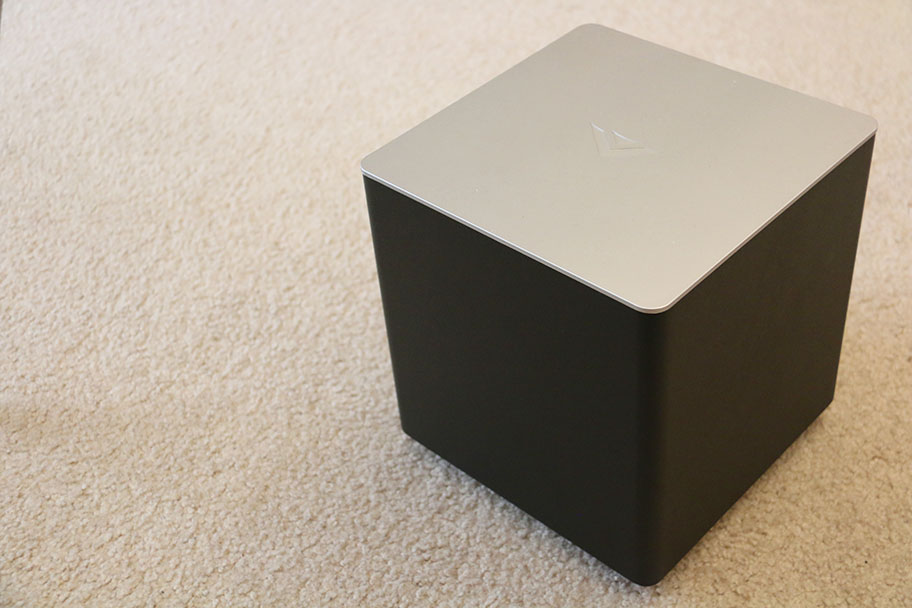
Almost every subwoofer you’ll see is an active subwoofer, which means it has its own internal amplifier, rather than relying on an external amp. The internal amplifier is the beating heart of your subwoofer and the most important thing it does is power the speaker driver. That power is measured in watts and understanding it is the key to choosing a good sub.
Subwoofers usually have two types of wattage listed on their specs: RMS and Peak. For all intents and purposes, you can ignore Peak. It’s a measure of the absolute highest power a subwoofer can put out when you crank it to the max. Trust us when we say: you aren’t going to be doing that often, especially if you value your ears. Instead, you’ll want to pay attention to RMS wattage. RMS stands for Root Mean Square - please don’t make us explain the math – and is sometimes referred to as continuous wattage. Essentially, it gives you an idea of how much power a subwoofer can put out when driven to a reasonable volume over long periods of time. So, as an example, let’s take the inexpensive Monoprice 9723, which goes for under $150 and sounds superb. It has an RMS wattage of 150 watts, which is typical for the price range, and is more than powerful enough for most people.
The key thing to bear in mind here is that wattage does not equal volume. It doesn’t matter how powerful a subwoofer is, you can always turn it down, right? Instead, think of wattage figures as a range in which you can push the subwoofer. The higher the wattage, the more likely the subwoofer is to play clean, distortion free audio at high volumes. Obviously, you will pay more for higher wattage figures. As a general rule, we think that most people will be entirely happy with a wattage from around 150-500 watts, which balances good power output with wallet friendly prices.
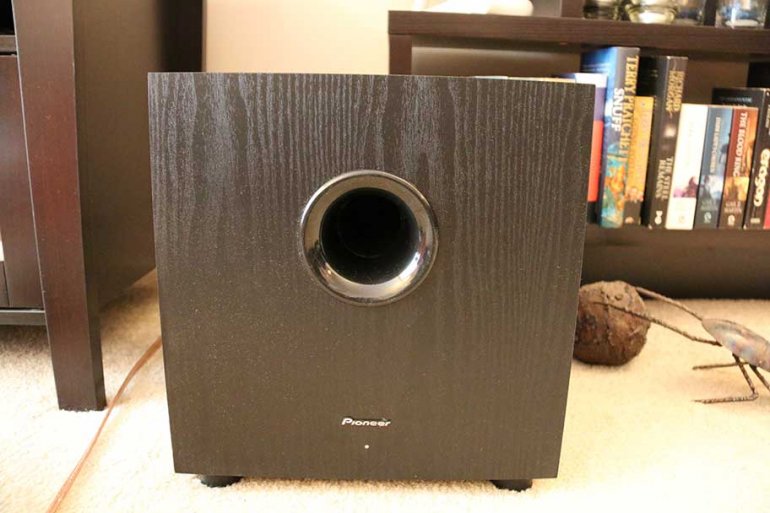
Most subwoofers will need to be directly connected to both a wall outlet, so they can draw power, and to your amplifier, so they can receive sound. The former is accomplished with the power cable, obviously, and the latter with an RCA cable, which is usually packaged with your subwoofer. But what if you want to go entirely wireless?
Wireless subwoofers do exist – just check out the $699 Sonos Sub. They communicate with their audio source via Wi-Fi or Bluetooth, and they work well. The Sonos Sub is a dream to use, and companies like VIZIO frequently make wireless subwoofers that connect directly to their soundbars. But despite our high praise, wireless subwoofers may not be worth your time. For one thing, you’re paying a hell of a lot extra simply to lose a single wire – the RCA cable connecting your subwoofer to your amp. For another, wireless subwoofers often operate within a closed ecosystem. What that means is that a sub like the Sonos model mentioned above will only be able to work with other Sonos equipment. If you upgrade your system later, you’ll be out of luck.
Our take is that, if you don’t plan on using speakers from a single brand in your system, it’s much better to have a regular wired subwoofer. Your sound quality will be better and you’ll spend less money in the long run. Wireless subwoofers have their place, but they are far less versatile than their more traditional wired cousins.
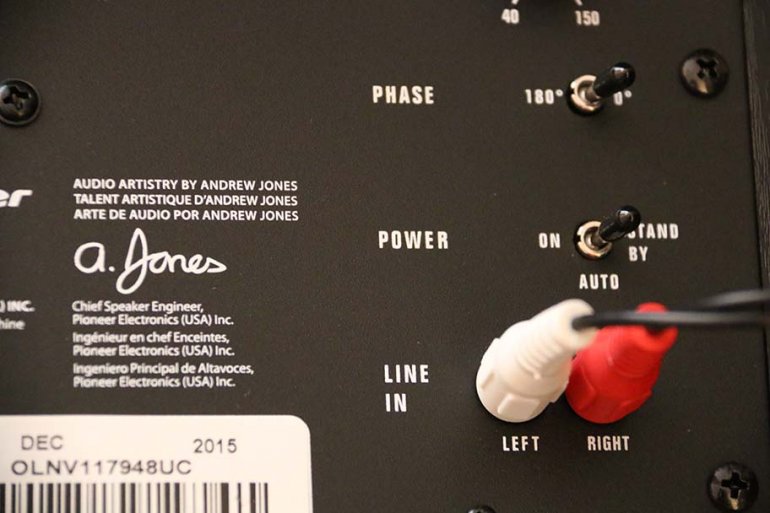
All sounds have a frequency – how high or how low they are. Frequency is measured in Hertz (Hz), and for subwoofers, being able to understand frequency is quite important. Bass notes obviously have a low frequency, which means that a subwoofer that is capable of reaching the lowest possible frequency is, by definition, a great subwoofer.
Human beings can hear down to about 20Hz, and we can feel down to 10Hz, which is the frequency range that makes your stomach rumble. The closer a sub can get to these, the better. Most modern subwoofers manage to reach depths of 25Hz, although some extremely expensive ones, like the $2,000 Power Sound Audio S3611, can sink to around 16Hz. You should always try to buy a subwoofer that reaches 25Hz, but you can get away with 50Hz if bass isn’t your thing. You’ll obviously pay more for a lower frequency floor, so take that into account when buying a subwoofer.
When setting up your subwoofer, take note of the highest frequency it can put out. This point is called the crossover, and is where your regular speakers stop producing sound, and your subwoofer starts. Most A/V receivers will allow you to manually set the crossover, which all but guarantees better bass sound. We haven’t seen this feature on many hi-fi amplifiers, but it does exist.
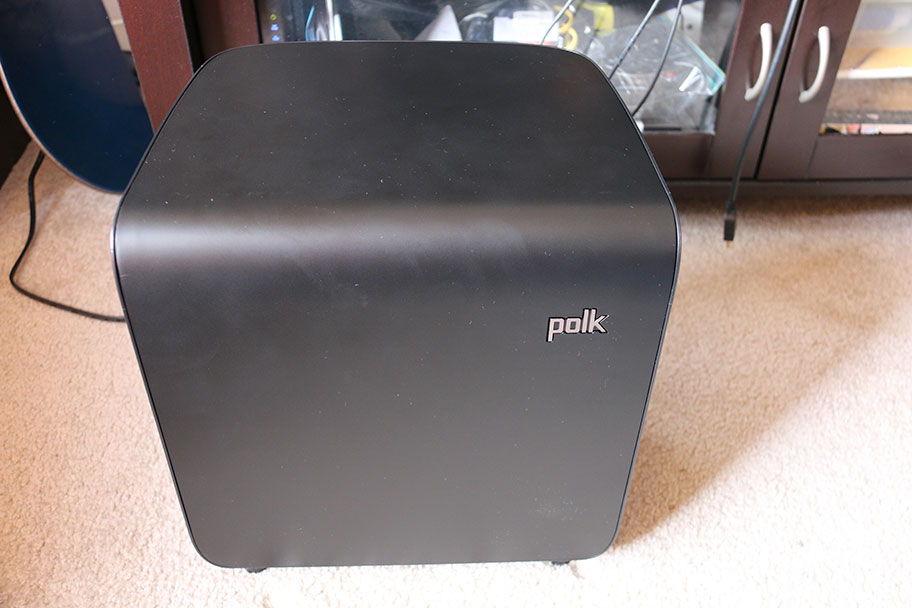
A front-firing subwoofer has its main driver facing forward. A down-firing one has the driver on the underside of the subwoofer, pointed down into the floor. There are very minimal differences between the two, and the one you go for depends on where you plan on placing your subwoofer. If you know it’s going to be closer to the main speakers, then you may want to invest in a front-firing subwoofer. But again, you can quite happily choose either one without too many ill effects.
If you want to boost your bass performance even further, then make sure to get a subwoofer with passive radiators. These are unpowered drivers that usually point out from the sides of the subwoofer and they can help carry your bass overall. You will probably pay a little extra for a subwoofer that has them, but it’s money well spent.
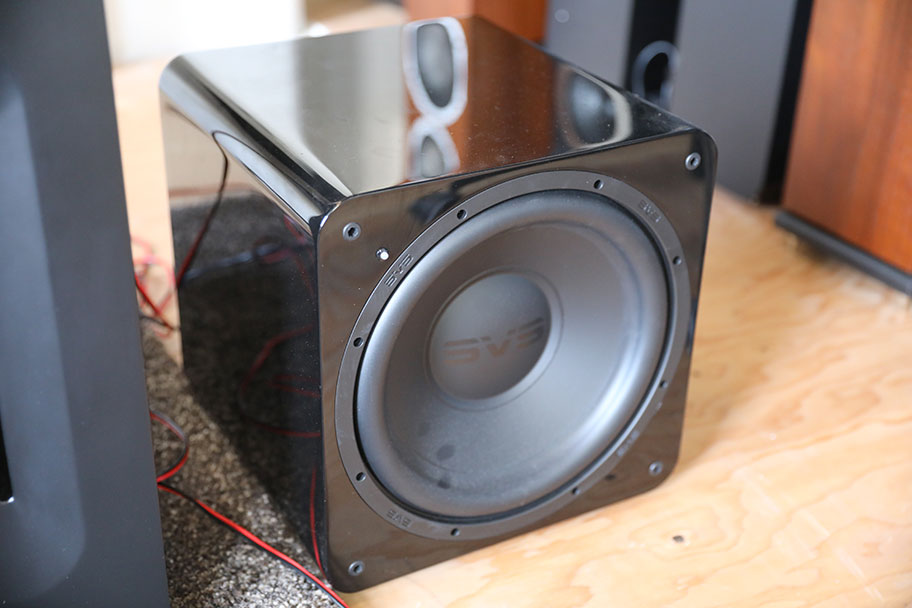
More than any other type of sound, bass is uniquely susceptible to its environment. Because of its slow moving, heavy nature, it tends to react poorly to rooms that are not ideal, collecting in corners and turning muddy and indistinct. Subwoofer manufacturers know this, and so many subwoofers contain what is collectively known as DSP (Digital Signal Path) technology. Essentially, it’s a way of improving and altering the sound before it actually gets pushed out the front of the subwoofer, so that it interacts with your room in a more pleasing way. There are generally two types of DSP. The first is Equalization (EQ) which lets you boost or cut certain frequencies of the sound. If a subwoofer has this, then it’s the kind of thing that will usually be adjusted in an app, as is the case on this $999 SVS SB-3000. Don’t worry if you don’t know how to adjust an EQ – that’s what presets are for. You may not even have to mess with that at all, thanks to room calibration.
Room calibration uses an included microphone that you attach to your subwoofer, which then plays a series of test tones. The mic records those tones as they bounce around your room, and the subwoofer adjusts itself accordingly. This tech can see major boosts in clarity and realism. You will almost certainly pay extra for these upgrades. And to be honest, most people can get away without them. They are the kind of thing you would go for if you want to extract the best possible bass from your subwoofer, and you’re unlikely to find them in any subwoofer under $500.
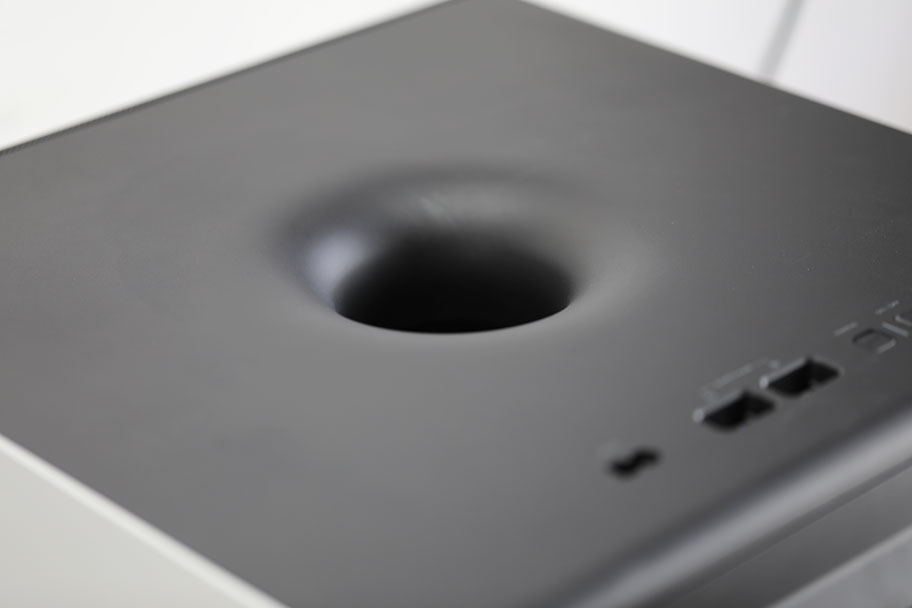
There’s something very weird about the world of subwoofers: the more expensive they are, the more likely they are to have holes punched in them. These are known as ported subwoofers, and as the name suggests, they have one or more ‘ports’ that lead directly to the interior. Sealed subwoofers, on the other hand, have no ports. Generally speaking, most subwoofers are sealed – certainly the majority of the models on our list of the best available right now fit this criteria.
The difference between sealed and ported subwoofers lies in sound quality. Sealed subwoofers tend to have tight, even, controlled sound quality, whereas ported subwoofers can push out huge volumes. If you’re just buying a subwoofer for a small hi-fi or home theater setup, then you don’t need to worry about buying one with ports. If you have a huge room, or you want to spend significant money, then go for one that is ported.
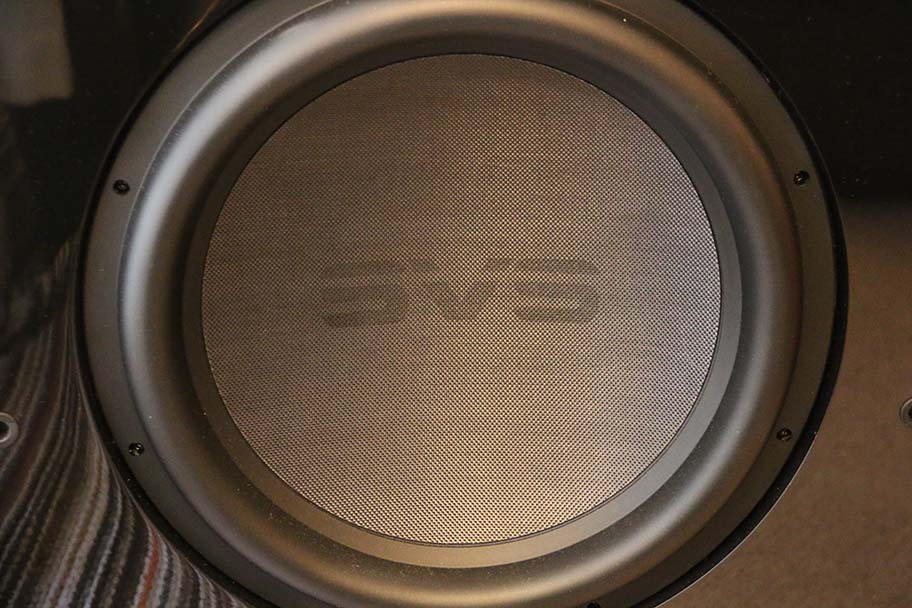
Subwoofers are fantastically versatile, and can be used for both music, movies, and gaming setups. The difference here is that, when you’re buying a subwoofer for a hi-fi system, you rarely need to buy more than one. This is not just because one subwoofer will be sufficient for music – it absolutely will - but it’s because most stereo amps don’t have the ability to transmit sound to more than one subwoofer.
Home theater is a different story. Many A/V receivers have the ability to output sound to two subwoofers at once, which makes sense when you are building a surround sound system. Two subwoofers not only double the power, but can really help provide the sensation that everybody who loves bass lusts after. That sensation is the feeling of the bass enveloping you, coming from all angles, hitting you right in the stomach. Buying two subwoofers is expensive, but if you’re willing to experiment and have a decent budget, you can get stellar results.
You probably shouldn’t be spending under $100 for a subwoofer. We’ve heard plenty below that price point and had mixed results. The good news is that you can get excellent subwoofers for as little as $140, and if you spend even a little more, the results are frequently fantastic. There are hundreds of subwoofers available in the $200-$1,000 price range, with some real gems in the middle.
You can, of course, spend thousands of dollars on a subwoofer. However, when you’re above $2,000, what you’re paying for is increased power and output wattage. Unless you have a massive room and a system to match, buying a subwoofer for over $2,000 will be overkill. We suggest shopping online for subwoofers, as chances to audition them are increasingly rare, even at high-end audio stores. Fortunately, we’ve put together a list of the best available subwoofers right now – just click the button below.